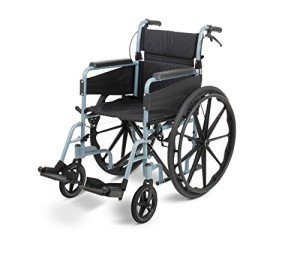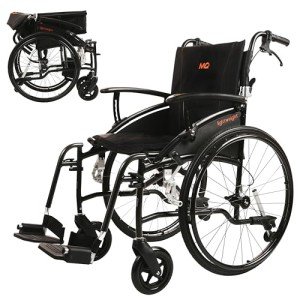
6
апреляWhat's The Current Job Market For Self Propelled Wheelchair Professionals?
self control wheelchair Propelled Wheelchair (Https://Heavenarticle.Com/Author/Priestpig2-1788520) With Attendant Brakes
 power assisted self propelled wheelchair propelled wheelchairs with brakes for attendants are a fantastic option for users that require extra support and stability while traveling. These chairs come with rear drive wheels as well as a variety of optional add-ons such as swing away leg rests or flip-up armrests.
power assisted self propelled wheelchair propelled wheelchairs with brakes for attendants are a fantastic option for users that require extra support and stability while traveling. These chairs come with rear drive wheels as well as a variety of optional add-ons such as swing away leg rests or flip-up armrests.
Unfortunately there have been few biomechanical studies of the turning and maneuvering of propelled wheelchairs with attendants. This is an area that requires more research.
Seat length
The size of a wheelchair's seat is the distance between the frame's edges. It is important to think about this when selecting the right chair, since the different types of users will require different dimensions. For instance, those who have large thighs may require a wheelchair with a wider seat. Sit in the chair, and then measure your thighs in order to determine the correct size. The best way to measure is with a yardstick. It will give you a precise measurement.
The width of the seat on a self-propelled wheelchair with brakes that are attendant is an important factor to consider, especially for caregivers. A seat that is larger allows the user to move comfortably and freely. It also makes it easier for caregivers to navigate the chair in tight spaces. Many attendant controlled wheelchairs are light and have smaller wheels to facilitate pushing and maneuvering. They are perfect for those who have limited upper body strength and coordination.
In addition to a comfortable seat, a wheelchair needs easy-to-use brakes. These are important for ensuring security, both when driving and during transfers. They also increase the occupant's independence and reduce their stress level. Dundee University research has shown that the best wheelchair braking system is one that employs a foot lever that is easily accessible and operated with just one hand.
Unlike self-propelled wheelchairs, which have larger rear wheels and hand rims, attendant controlled wheelchairs have smaller wheels and are designed to be pushed by caregivers. These wheelchairs are ideal for those with limited upper body strength. They can also be easily maneuvered and used in a variety of situations. Many models also have cable brakes to improve safety and convenience. Some even fold flat, making them perfect for storage and transportation in cars. Additionally, the majority of models focus on comfort by offering features such as armrests and seats that are cushioned.
Seat height
The seat height of a self-propelled wheelchair with attendant brakes may vary greatly and must be considered carefully. The ideal position is one that lets the user sit up straight and comfortably without stress. The height of the chair can also affect the force needed to push the wheelchair. This can impact the performance of a wheelchair, and is particularly relevant when a chair has front-wheel drive.
The location of the handle can be a major factor in the ease with which the wheelchair can be moved. The handles on most wheelchairs are either horizontally across the rear frame or as levers that extend backwards from the chair. Recent pushing studies have shown that these handles are not ideal for wheelchairs.
Wheelchairs are used by a range of people in homes, hospital and other settings. Many of these people are unable to walk and require assistance to move about. The people who attend, which is typically relatives or friends of the occupant might not be able to walk and may find it difficult to manoeuvre wheelchairs outdoors and indoors. They may also have difficulty getting the person out of the wheelchair.
The ability of the attendant to manage the wheelchair in a chaotic environment is a key issue. A wheelchair that is maneuverable is crucial, as is a large set of wheels and puncture-proof tyres. A solid castor trail (the distance between the wheel axis and the axes of the handle holder) is also essential for a smooth ride.
The Ugo Esteem Self-Propelled Wheelchair with Attendant brakes is an excellent example of an ergonomic wheelchair self propelled that is designed and easy to push. This model is made of a lightweight aluminium alloy frame with a warranty of two years for the frame and puncture-proof tyres. It has adjustable footplates as well as armrests, an elevated leg rest option (please select the drop-down menu) and a compact folding frame making it easy to transport and put away.
Seat depth
The seat's depth in wheelchairs is a vital element that determines how simple it is for the user to move. A seat with a deeper depth can prevent a user from sliding forward and off the chair. A seat that is not deep can cause discomfort and injuries. A wheelchair should have at least 2 inches of depth. This will allow you to get around small obstacles and climb over kerbs.
The height of the armrests as well as the seat are also significant in determining the correct size wheelchair for an individual. A taller individual will need an upper seat than a shorter one, whereas a taller one will require one that is lower. If the wheelchair is going to be used for postural support the backrest must be elevated higher than normal. This will make the wheelchair more comfortable for the user, and allow them to sit up straight.
The force applied to the wheels determines the rolling resistance of a wheelchair. This force is dependent on the wheel's radius of curvature and surface condition. Wheels can be made with softer tires to reduce friction between the tread and the road surface or to increase the rim width. Furthermore, the wheel's force of inertia is a major element, and is reduced by changing the castor design.
For example, the ugo Esteem Lightweight Self Propelled Wheelchair has a castor trail that is adjusted to suit the individual. This makes it easier to turn and less likely to shimmy when starting at rest. The adjustable height of the footrest, angle as well as the seat cushion and back rest are other features that allow it to be more adaptable to each user's needs.
You can determine the height of chairs by measuring the distance between the spine's base and the back of your knee. Typically, this measurement should be taken by a professional to avoid injury to the user. It is crucial to think about whether the user needs a footrest and, if so the height.
Armrests
Wheelchairs are commonly employed by hospital staff to transfer patients between departments, as well as a primary mode of transportation for patients that are unable to walk. Transferring patients into and out of wheelchairs can be a challenging task for attendants, as they have to lift them every time and push and maneuver the chair on different terrains. The ergonomic design of these chairs must aim to make propulsion and general operation as easy for the attendants by reducing the physical demands on them. The characteristics of handling these chairs, like their resistance to rolling and turning resistance, the height of the handle and the position of brakes, must be optimised biomechanically in order to ensure maximum comfort for attendants.
The armrests on a self-propelled chair with brakes must be placed in a way that allows patients with good arm strength to help themselves get out of the chair. They should also be able to be removed so that they do not block access for people with greater disabilities when being lifted up into the seat. The first prototype chair made in Dundee featured armrests which protruded forward to provide support for the user's hands and which could be folded back when not in use.
If the user is seated in the chair for a longer period of time or for short trips, it is vital that they feel comfortable and safe. The cushioned seat and backrest are constructed of tough and wipe-clean nylon. In addition the foot rests that are on this model are adjustable and swing away so that transfers can be made easier.
The light attendant controlled chair has a number of features that are helpful for the caregiver or attendant. They include adjustable footplates, flip-up adjustable armrests to help with side transfers and aid them to get closer to a desk and cable brakes to reduce speed and an incline tube to climb curbs. The backrest can be folded down for simple storage and transportation. The lightweight wheelchair comes in two sizes and comes with a 12 month warranty as standard.
Отзывы